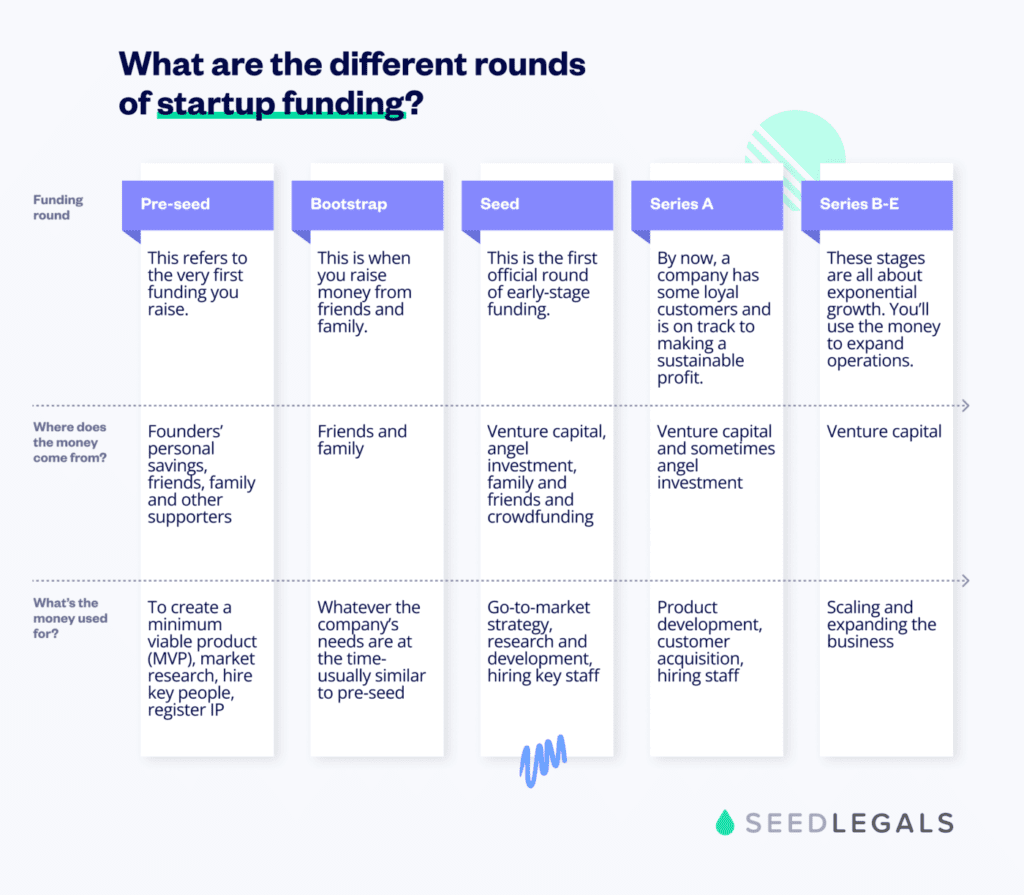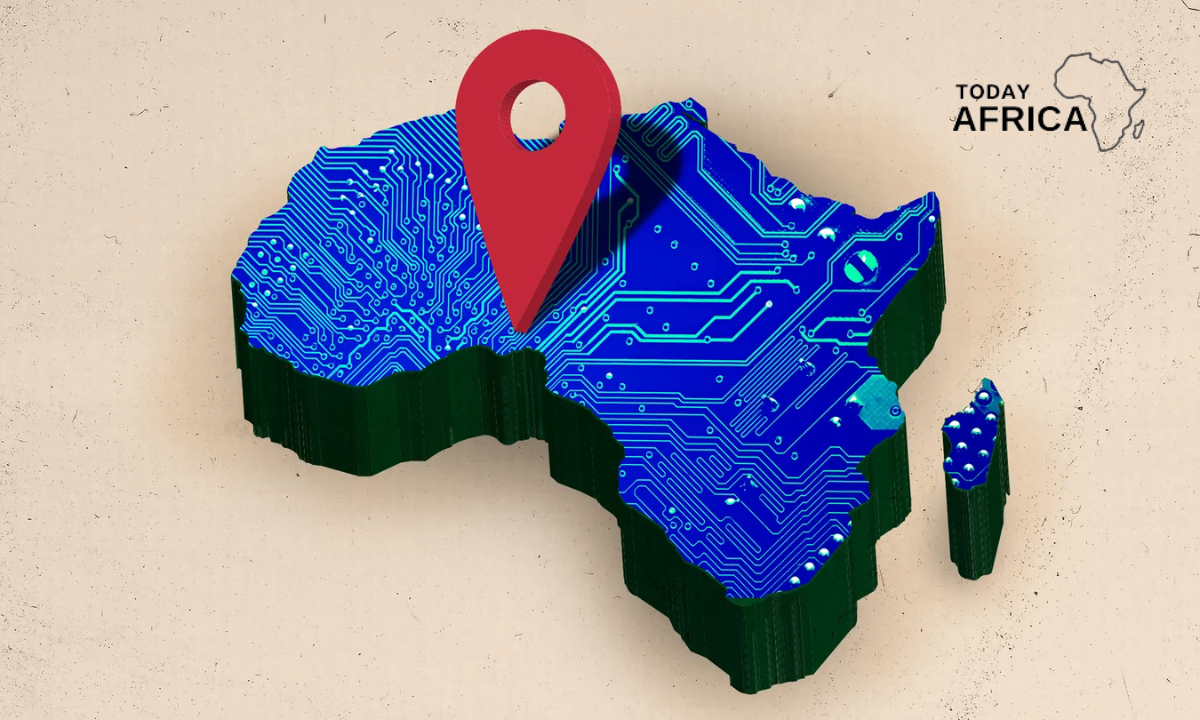Is your startup still just an idea you’ve yet to materialize? If so, it’s pre-seed funding you’ll need to get things off the ground. In this article, we’ll explain what pre-seed funding is and how to raise it.
What is Pre-Seed Funding
Pre-seed funds are the initial injection of capital that startups receive to transform their vision into a viable business.
This funding stage typically occurs before the seed funding round and serves as a precursor to attracting larger investments.
Pre-seed funding essentially involves investing in an idea, as products typically aren’t developed yet, and businesses may have nothing beyond a prototype.
What’s the difference between seed and pre-seed funding? Click here to read the key differences between them.
What is Pre-seed Funding Used For?
Pre-seed funds are used to build your foundation. It’s used to help your startup maximize the chances of securing future investments to help it grow.
Startups use pre-seed funding to:
- Create a minimum viable product (MVP)
- Build an initial team that has the combined skills to develop, market, and distribute the product
- Design a growth strategy
- Build distribution channels
- Research your potential market (including size, opportunity, and documenting feedback from potential customers)
The Significance of Pre-Seed Funding
Pre-seed funding plays a pivotal role in the startup ecosystem.
Here are a few reasons why pre-seed funding is significant for your startup:
1. Validation: Securing pre-seed funds demonstrates that investors believe in the potential of your idea.
This validation not only boosts the confidence of the founding team but also attracts future investors.
2. Proof of concept: With pre-seed funds, startups can build a minimum viable product (MVP) or a prototype to showcase their idea’s feasibility.
This tangible evidence increases the chances of securing subsequent funding rounds.
3. Market research: Pre-seed funding allows startups to conduct comprehensive market research, helping them understand their target audience, competitors, and industry trends.

Strategies for Successful Pre-Seed Funds
Now that we understand the significance of pre-seed funds, let’s explore some effective strategies for securing this crucial capital.
By following these steps, entrepreneurs can increase their chances of attracting pre-seed investors:
1. Refine your pitch deck: Craft a concise and visually appealing pitch deck that clearly communicates your business idea, market opportunity, competitive advantage, and revenue model,
2. Leverage your network: Tap into your personal and professional network to find potential pre-seed investors. Attend networking events, join entrepreneurial communities, and leverage online platforms to connect with individuals who share your vision and are willing to invest in early-stage startups.
3. Develop a minimum viable product: Building a functional MVP or a prototype can greatly enhance your chances of securing pre-seed funding.
It demonstrates your commitment, technical capability, and market readiness, making your business more attractive to investors.
When to Consider Raising Pre-Seed Funds
When your business meets the following criteria, it may be ready for pre-seed funding:
1. Minimum viable product (MVP): Having a minimum viable product that is likely to gain traction is crucial.
An MVP is an early version of your product that you continuously improve based on market research and customer feedback.
As it garners attention from both investors and consumers, additional features are added to develop it into the final product.
2. Experienced founding team: While it’s advantageous to have a founding team with ample knowledge and expertise in your industry, even a team without extensive experience can still appeal to initial investors.
3. Product-market fit: If your product aligns well with the target market and appeals to your intended audience, it increases your chances of attracting investors who recognize its potential.
Demonstrating that your audience appreciates and has a want or need for your product is essential.
4. Onboarding customers: If you have started onboarding new customers or have a small customer base, it may be an indication to raise pre-seed funding.
The ability to meet the increasing demand as your customer base grows is crucial for sustainable growth.
How to Raise Pre-Seed Funding
1. Determine the right time: Pre-seed funding is particularly suitable for startups in their early stages. Evaluate whether this type of funding aligns with your business goals and objectives.
If you have a promising idea and a functional prototype, pre-seed funding can provide the necessary resources for a successful launch.
2. Craft a compelling pitch deck: Since you may not have a tangible product at this stage, a strong pitch deck becomes crucial.
This deck should provide potential investors with a clear understanding of what they are investing in.
Include details about your product, business, target market, and financial projections for the future.
It’s advisable to create multiple pitch decks tailored for different purposes, such as presenting in person or sending via email.
3. Identify the right investors: Once your pitch deck is ready, identify investors who are likely to be interested in your venture.
Research investors who have previously invested in similar businesses to gauge their potential receptiveness.
Networking opportunities, such as industry expositions, can also help you connect with interested prospective investors within your network.
Look for investors who have a track record of investing in businesses within your industry.
Finding the right investor not only secures pre-seed funding but also brings valuable guidance as you grow your business.
4. Negotiate the contract: The final step involves negotiating the terms with potential investors.
It is crucial to have a written agreement in place before accepting any investment.
This safeguards your business against potential issues if investors back out or fail to fulfill their commitments.
If you don’t like the deal on the table, you should also be able to turn it down, as this could benefit you in the long run as you secure better deals.
Conclusion
By understanding the significance of pre-seed funding, implementing effective strategies, and leveraging their network, you can increase your chances of attracting early-stage investors.
Remember, pre-seed funds are not just about the financial resources—it’s about gaining validation, proving your concept, and setting the stage for future growth.
















